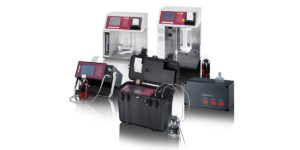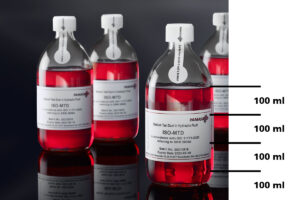Oil-filled power transformers are used in power generation and distribution. Even a very low level of particulate contamination within this oil can damage the large machinary and can pose a safety risk.
Due to the high amount of transferred voltage, transformers heat up significantly and thus need to be cooled. Power transformers are usually cooled with oil. The insulating oil does not only serve as coolant, but it also insulates empty spaces between conductive materials.
The problem: Particles in the oil affect the dielectric strength of the insulating oil. Depending on type, size and quantity of particles, a flash-over might be generated: The flash-over turns the oil into an electric conductor and the insulating function stops. A flash-over in insulating oil may lead to a break-down of the system and increases the danger of explosion or fire hazard.
There are four sources of particulate contamination in power transformer insulating oil:
- Pre-existing contaminants in the casing: Before a transformer is being filled with oil, the case might have already been contaminated beforehand. Pre-existing contaminants may be introduced into the insulating oil and decrease the oil quality.
- Case vibration: The transformer case vibrates during operation thus all transformer components (e.g. cables or coils) move. Vibration and motion of components can cause a further increase of abrasive particles.
- Switch in transformer: Some transformer models include mechanical switches. When these switches are operated, particles may be produced and introduced into the oil.
- Flash-over abundance: If there are already particles in the oil, flash-overs are generated. Accompanying light and carbon deposits enter into the oil land can lead to an increase in the number of particles (through incineration) and to a decrease of the oil quality.
Therefore, before a transformer is put into operation, the insulating oil needs to be observed and verified with a particle counter. In addition, components of the transformers that come into contact with the insulating oil (e.g. radiators) must be flushed by the supplier prior to assembly and the cleanliness must be verified. While the oil is being processed or while the transformer is being filled with oil for the first time, the particle counter monitors the oil cleanliness. It is, therefore, imperative to inspect the insulating oil regularly during operation. If too many particles are detected, filtration or exchange of the insulating oil will ensure trouble-free and safe operation.
Manufacturers and operators of transformer systems acknowledge that PAMAS particle counters are an intrinsic instrument due to their reliability, their measuring accuracy and their multiple application profiles.
Mineral oil, synthetic oil and vegetable oil can be used to cool and insulate transformers.
The analysing methods for particle counting of insulating liquids are standardised in the IEC 60970 and the ASTM D6786:
- IEC 60970 by International Electrotechnical Commission: Method for counting and sizing particles in insulating liquids
- ASTM D6786 by American Society for Testing and Materials: Standard Test Method for Particle Count in Mineral Insulating Oil Using Automatic Optical Particle Counters
Both standards require the calibration of Automatic Particle Counters according to ISO 11171.
As a member of the technical committee, PAMAS Technical Manager Michael Schumacher was actively involved in the elaboration of the IEC 60970 standard.





One Response
Quite Informative